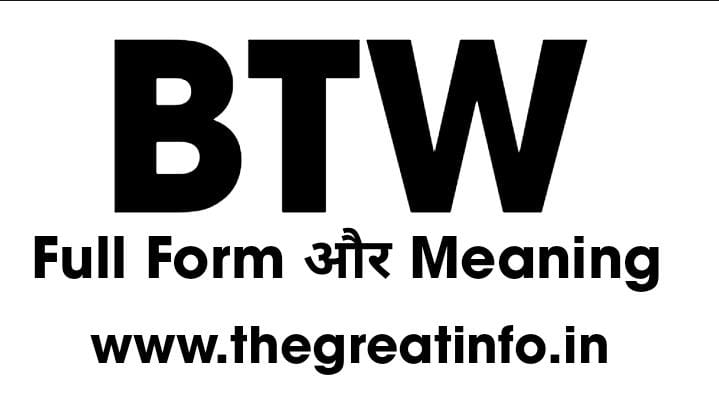In a world driven by digital communication, acronyms have become an integral part of our everyday language. They add a layer of efficiency to our conversations, allowing us to convey messages with brevity and speed. One such acronym that has seamlessly integrated into our discourse is “BTW” – but what does it really mean, and how has it shaped our communication?
Understanding “BTW”:
“BTW” is more than just three letters strung together. It stands for “By The Way,” and its usage extends beyond mere informality. Originating from the need for quick, convenient communication, “BTW” finds its place in various contexts, from casual chats to professional emails.
Decoding the Full Form of “BTW”:
Let’s break down “BTW” – By The Way. This simple yet versatile phrase often acts as a segue in conversations. Whether it’s introducing an additional thought or a side note, “BTW” facilitates smooth transitions in dialogue.
Historical Context of “BTW”:
The acronym “BTW” didn’t emerge overnight. Its roots trace back to early digital communication, gaining prominence as internet usage soared. Understanding its historical context provides insights into its widespread adoption.
BTW in Digital Communication:
In the era of text messages, emails, and social media, “BTW” serves a crucial role. Its concise nature allows individuals to convey additional information without derailing the main conversation. It’s a linguistic tool that balances brevity with clarity.
Alternative Meanings of “BTW”:
While “By The Way” is the standard interpretation, the acronym landscape is rife with creativity. Some may playfully suggest “Bring The Wine” or “Better Than Words.” Navigating through these alternative meanings adds a layer of fun to the language.
Common Misconceptions:
Despite its widespread use, “BTW” is not immune to misconceptions. Some individuals might interpret it differently, leading to occasional confusion. Clarifying these misconceptions ensures a shared understanding of the term.
Impact on Language Evolution:
Acronyms like “BTW” contribute to the evolution of language. They shape linguistic trends and reflect the dynamic nature of communication. Understanding their impact is crucial in staying attuned to the ever-changing linguistic landscape.
Pop Culture References:
“BTW” isn’t confined to digital conversations; it has permeated pop culture. From movie dialogues to song lyrics, this acronym has found its way into various forms of artistic expression, solidifying its place in contemporary culture.
BTW in Professional Settings:
Beyond casual conversations, “BTW” has infiltrated professional settings. Its judicious use in emails strikes a balance between formality and informality, making it a valuable tool in workplace communication.
BTW in Different Languages:
Languages may vary, but the need for efficiency in communication is universal. Exploring how different languages adopt and adapt “BTW” provides a cross-cultural understanding of this versatile acronym.
Social Media Influence:
In the realm of social media, character limits demand succinctness. “BTW” aligns perfectly with this demand, becoming a staple in tweets, captions, and comments. Its influence on social media culture is undeniable.
Future Trends and Evolution:
As language continues to evolve, so will the usage of acronyms like “BTW.” Predicting future trends allows us to stay ahead in the ever-changing landscape of digital communication.
Reader Engagement:
What’s your favorite use of “BTW”? Share your experiences and interpretations in the comments below. Let’s make this discussion as dynamic as the language we’re exploring.
Conclusion:
In the grand tapestry of language, “BTW” is a thread that weaves seamlessly through our conversations. Its adaptability, from casual banter to professional correspondence, showcases its significance in contemporary communication. As we navigate the linguistic landscape, let’s appreciate the role of acronyms like “BTW” in shaping the way we express ourselves.
FAQs:
- Is “BTW” only used in English?
- While its origin is English, many languages have adopted “BTW” or developed their own equivalent.
- Can “BTW” be used in formal writing?
- Yes, “BTW” can be used in formal writing, but its appropriateness depends on the context.
- Are there other acronyms similar to “BTW”?
- Absolutely! Acronyms like “FYI” (For Your Information) and “IMHO” (In My Humble Opinion) serve similar functions.
- How has the meaning of “BTW” evolved over time?
- Initially a simple segue, “BTW” has evolved to encompass various nuances, reflecting changes in communication styles.
- Can the use of acronyms like “BTW” lead to miscommunication?
- While rare, miscommunication can occur, especially when alternative interpretations are involved.

